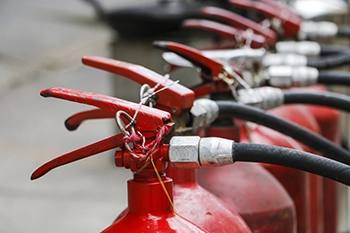Fire alarms save lives. In rental properties, they are not only a legal requirement but also a vital safeguard for tenants. Landlords often ask how frequently alarms should be tested to remain compliant with UK law. The answer depends on the type of property, the system installed, and the legal framework that applies.
This guide explains landlord duties, outlines how often tests should take place, and highlights best practices to reduce risk.
Several pieces of legislation govern fire alarms in rental properties. The Smoke and Carbon Monoxide Alarm (Amendment) Regulations 2022 require landlords to fit smoke alarms on every storey and carbon monoxide alarms in any room with a fixed combustion appliance. Landlords must also check that alarms work at the start of each tenancy. Read the regulations here.
The Regulatory Reform (Fire Safety) Order 2005 adds a broader duty. It states that the “responsible person”, often the landlord, must ensure fire precautions are in place and maintained. This requirement covers alarms directly.
For HMOs, the Housing Act 2004 and local council licensing schemes introduce even stricter rules. Many councils specify interlinked fire alarm systems and detailed testing schedules as part of licence conditions.
Fire alarms should never be left unchecked. However, the frequency of testing depends on the type of system:
These checks reassure landlords that alarms will work in an emergency. Importantly, landlords should keep a log of every test. Local authorities can then use this record to confirm compliance during a fire safety inspection.
Basic tests do not replace professional servicing. Under BS 5839, fire detection and alarm systems must be inspected and serviced by a competent person at least every six months. For higher-risk HMOs, quarterly servicing may be recommended.
A professional engineer will:
These visits play an essential role. A fire risk assessment also checks whether servicing schedules are adequate for the type of property.
You can view a summary of the BS 5839 series on the Fire Industry Association website.
HMOs face higher risks due to multiple occupants and shared facilities. Most councils require:
Failing to meet these standards can result in licence breaches, heavy fines, or even closure of the property. Council housing officers often review logs during inspections.
In single-family rentals, the law is slightly different. The Smoke and Carbon Monoxide Alarm Regulations require alarms to be fitted and tested at the start of the tenancy. After this, tenants are usually responsible for pressing the test button monthly.
However, landlords should not assume tenants are always reliable. Best practice is to:
By documenting these steps, landlords show they are taking reasonable measures to keep tenants safe.
While landlords hold the main legal duties, tenants also play a role. They should:
Encouraging tenants to take alarm testing seriously creates a stronger overall safety culture.
Many landlords intend to comply but fall short due to simple errors. The most frequent include:
These mistakes increase risks and prevent landlords from proving compliance easily.
Local authorities can issue fines of up to £5,000 per breach under the Smoke and Carbon Monoxide Alarm Regulations. In HMOs, failure to comply with licence conditions can also lead to unlimited fines or loss of licence.
In serious cases where landlords ignore duties, enforcement can escalate to prohibition orders or criminal prosecution. The costs of non-compliance far outweigh the small effort of regular testing.
To remain compliant and protect tenants, landlords should:
Following these steps ensures landlords meet legal duties and demonstrate a proactive approach to safety.
Fire alarm testing is more than a legal obligation. It is a vital safeguard that saves lives. For landlords, the frequency is straightforward: weekly for HMOs, monthly for single lets, and professional servicing every six months.
By following the law, keeping accurate records, and arranging professional support, landlords can stay compliant and protect their tenants.
Our team provides fire risk assessments, inspections, and training to help landlords manage fire safety with confidence. Get in touch today to discuss compliance across your rental portfolio.

The Complete Fire Extinguisher Maintenance Guide for Landlords, HMO Owners, and Businesses Fire extinguishers save lives - but only if they are properly maintained. Whether...

Understanding Fire Safety at Home Fire safety isn’t just a concern for landlords and business owners. Every home, whether rented or privately owned, needs the...